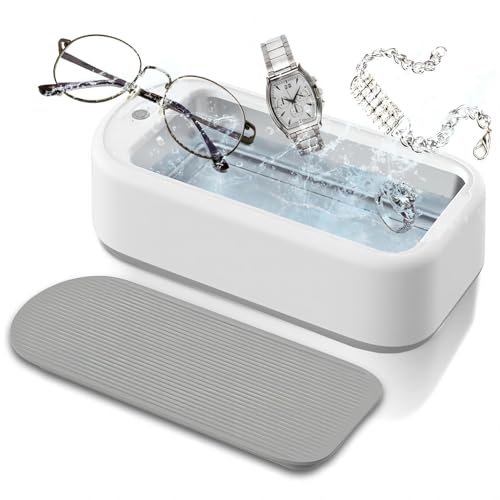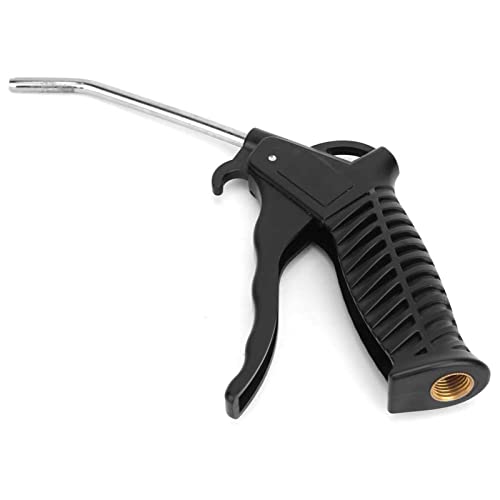This step-by-step guide will explain how to clean a skeleton dial watch. Skeleton dial watches have intricate designs and exposed inner workings that require regular maintenance and cleaning. Proper cleaning is important for keeping the watch looking its best and functioning properly.
Top Selling Skeleton Dial Watches
Gather the necessary materials
Before you begin cleaning your skeleton dial watch, gather the necessary materials. First, find a soft microfiber cloth to use for wiping down the watch. This type of cloth will be gentle on the delicate parts of the watch, preventing any scratches or damage. Additionally, you will need a small brush with soft bristles, which will help remove any dirt or debris that may have accumulated in the crevices of the watch. Make sure the bristles are soft, as harder bristles could potentially cause scratching.
Next, locate mild soap or watch cleaning solution. This is crucial to effectively clean your watch without causing any harm to the materials. If you’re using soap, make sure it is mild and doesn’t contain any harsh chemicals. Alternatively, if you have watch cleaning solution specifically designed for delicate watches, that would be a great option as well. Additionally, prepare a bowl of lukewarm water. Lukewarm water is gentle enough to not damage the watch but still effective at cleaning. Finally, find a dedicated watch cleaning cloth, which is designed to be used specifically on watches. This cloth will help you polish and dry your watch after cleaning, ensuring it looks as good as new.
Remove the watch strap
- Locate the release pins: Look for the spring bars or release pins that connect the watch strap to the case. These are usually located on the lugs of the watch, on both sides of the strap. Use a magnifying glass if necessary to see them clearly.
- Use a spring bar tool: Once you have located the release pins, take a spring bar tool. Insert one end of the tool into the small hole or gap between the watch strap and the lugs. Apply gentle pressure to compress the spring bar.
- Push and release: While exerting pressure on the spring bar, carefully push it towards the center of the strap. This will detach one end of the strap from the watch case. Repeat the same process for the other side of the strap.
- Remove the strap: With both ends of the strap disconnected, gently pull it away from the watch case. Take care not to bend or damage the lugs while removing the strap. Set the strap aside in a safe place where it won’t get scratched or misplaced.
It is important to note that different watches may have different mechanisms for releasing the strap. Always refer to the manufacturer’s instructions to ensure you remove the watch strap correctly and without causing any damage.
Clean the dial and case
To clean the dial and case of your skeleton watch, start by dampening a soft microfiber cloth with lukewarm water. Carefully wipe the dial and case, ensuring not to let any moisture enter the watch. The gentle wiping motion will remove any surface dirt or smudges.
If you come across stubborn stains or dirt that the water couldn’t remove, reach for a mild soap or watch cleaning solution. Apply a small amount of the solution onto a soft brush and gently scrub the affected areas of the dial and case. Be cautious not to rub too vigorously or use abrasive materials that may scratch the watch’s surface. The gentle scrubbing action will help lift away the stubborn stains and dirt, restoring the watch’s shine.
Dry and polish the watch
- After cleaning, use a clean, dry microfiber cloth to carefully dry the dial and case. Gently wipe off any remaining moisture to ensure the watch is completely dry. This step is crucial to prevent water spots or residue from forming on the surface. Pay attention to areas that are more difficult to reach, such as in between bracelet links or around the crown. By using a microfiber cloth, you avoid scratching or damaging the watch’s delicate parts.
- Once the watch is dry, it’s time to restore its shine using a watch cleaning cloth. This specialized cloth is designed to bring back the luster and remove any fine scratches that may have occurred during regular wear. Simply wrap the cloth around your finger or use it directly on the watch’s surface, and gently polish the dial and case using circular motions. Start with light pressure and gradually increase if necessary, depending on the material of your watch. You’ll notice how the cloth lifts fingerprints, smudges, and other dirt, brightening up the watch’s appearance.
For example, after cleaning your watch, take your dry microfiber cloth and gently go over the dial and case, paying attention to areas such as the bracelet links and the back of the watch where dirt can accumulate. If any moisture remains, continue to wipe until the surface is completely dry. Then, take your watch cleaning cloth and softly polish the watch’s surface, ensuring you cover the entire dial and case. Be sure to use a light touch and maintain circular motions to avoid leaving traces or causing further scratches.
By following these steps, you’ll be able to effectively dry and polish your watch, leaving it clean, shiny, and ready to wear again. Remember to handle your watch with care while cleaning and drying to avoid any accidental damage.
Reattach the watch strap
- Carefully Reattach the Watch Strap:Once the dial and case of your watch are clean and dry, it is time to reattach the watch strap. Start by locating the small pins or screws on either side of the watch case where the strap was previously attached. These pins or screws may be visible or hidden under a small cover or cap. Follow the manufacturer’s instructions to ensure you are reattaching the strap correctly.
- Ensure Secure Fastening and Comfortable Fit:Once you have located the attachment points, align the holes or notches on the strap with the pins or screws on the watch case. Gently insert the pins or align the screws into the corresponding holes or threads, making sure they are securely fastened. This will ensure that your watch strap stays in place during regular wear and prevents accidental detachment.
After attaching the strap, try wearing the watch on your wrist to ensure a comfortable fit. Adjust the length of the strap if necessary, following the manufacturer’s instructions for resizing. It is important that the watch fits securely without being too loose or too tight, allowing for ease of movement and preventing discomfort. By following these steps, you can reattach the watch strap effectively and enjoy wearing your timepiece with confidence.
Final Thoughts
In conclusion, taking the time to properly clean your skeleton dial watch is essential for its longevity and aesthetic appeal. By following the steps outlined in this blog post, you can easily maintain its appearance and functionality. Remember to make regular cleaning a part of your watch care routine to ensure it continues to look its best and serve you well for years to come.
Necessary Equipment
Maintenance Techniques
Using Skeleton Dial Watches: A Step-by-Step Guide
- Familiarize yourself with the basic components of a skeleton dial watch: The dial, the hands, the movement, and the transparent front and back covers
- Take note of the watch’s winding mechanism. Skeleton dial watches often require manual winding to keep them running accurately. Locate the crown (the small button on the side of the watch) and wind it clockwise until you feel resistance
- Set the time: Pull out the crown to the desired length (usually one click). Rotate the crown clockwise or counterclockwise to adjust the time. Push the crown back in when done
- Observe the movement: As the name suggests, skeleton dial watches have transparent dials that showcase the intricate internal mechanism. Pay attention to the movement of gears, springs, and balance wheels as they work together to keep the watch ticking
- Maintain and care for your watch: Avoid exposure to extreme temperatures, water, and magnetic fields as they could damage the delicate internal components. Clean the watch regularly using a soft cloth to remove dirt and dust. Additionally, consider regular servicing by a professional to ensure the longevity and accuracy of your timepiece
Frequently Asked Questions about Skeleton Dial Watches
Are there different styles or designs available for skeleton dial watches?
Yes, there are different styles and designs available for skeleton dial watches. A skeleton dial refers to the transparent or partially cut-out dial that showcases the intricate mechanical movements of the watch. These watches often feature exposed gears, springs, and other components, providing a unique and visually appealing look. The designs can vary significantly, ranging from classic and elegant to contemporary and avant-garde. Some watches have a minimalistic approach, with only a few cut-outs revealing the movement, while others have intricate skeletonization with multiple layers and a more complex showcase of the internal mechanisms. Additionally, different materials, such as stainless steel, rose gold, or titanium, can be used for the watch case and bands, allowing for further customization and variation in style.
How does the design of a skeleton dial watch affect its readability?
The design of a skeleton dial watch can have both positive and negative effects on its readability. On one hand, a skeleton dial, which features a cut-out design revealing the inner workings of the watch, can be visually appealing and add a sense of complexity and elegance to the timepiece. It allows the wearer to admire the intricate mechanics and craftsmanship of the watch.
However, the transparent nature of the skeleton dial may make it more challenging to read the time compared to a traditional watch dial. The lack of solid hour markers, numerals, or contrasting colors can make it harder to quickly discern the time at a glance, especially in low light conditions or for individuals with visual impairments.
Some skeleton dial watches may address this issue by incorporating luminous materials or adding small hour markers or numerals around the dial to improve legibility. Additionally, the position and size of the hands become crucial in ensuring readability as they need to contrast with the background and be clearly distinguishable.
In summary, while a skeleton dial watch may enhance the aesthetic appeal and showcase the watch’s intricate mechanisms, its readability can be compromised due to the absence of traditional dial elements.























